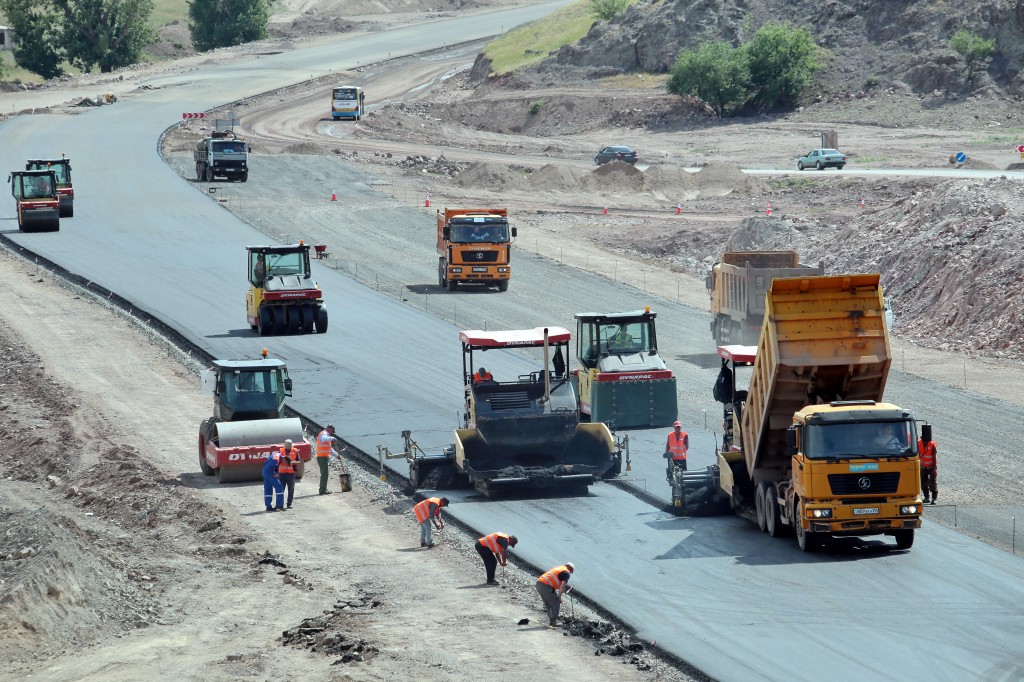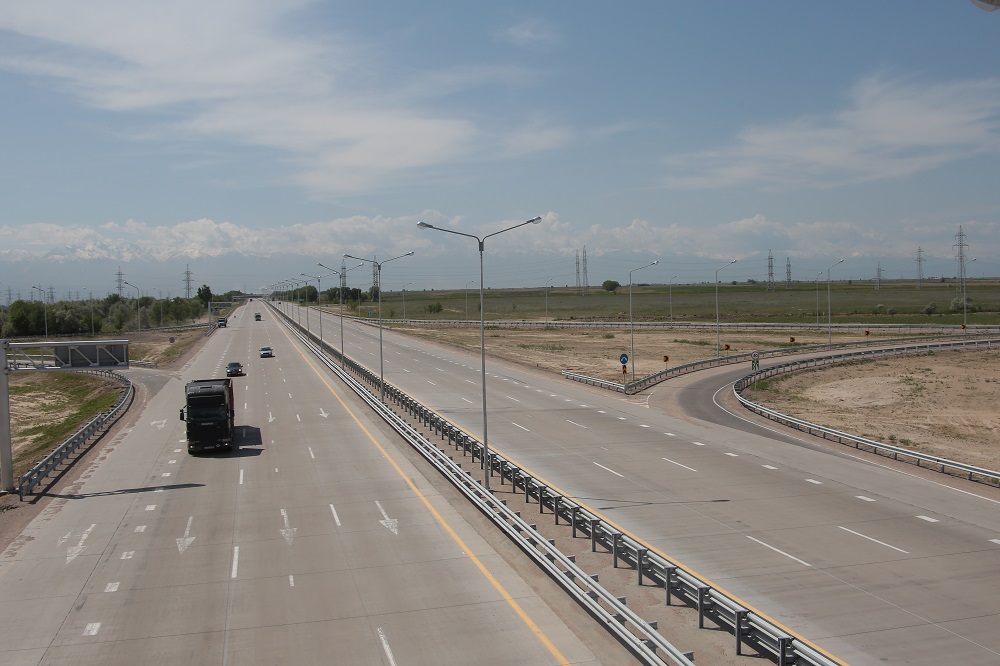At the end of this year, the Kapshagai route from Almaty to Taldykorgan will be opened to traffic. Full commissioning of the road, which is about 260 kilometres long, is planned by 2017, representatives of the KazAvtoZhol national company announced at a press tour of the construction site of the motorway.
Earthworks are underway on the project, which is being operated by the K-Dorstroi, Kazakhdorstroi and Naiza-Kurylys companies. The roadbed has been laid and bridges, overpasses, interchanges and culvert channels have been built, company representatives announced. More than 90 percent of the materials used come from domestic production, they said. These include modern asphalt plants and metal constructions.
The road is being built according to the 1A standard, and expanded to six lanes. Director of the Almaty regional branch of KazAvtoZhol Batyr Dadamurzayev said the road’s quality is the same as the Astana–Burabai motorway, and will have a maximum allowed speed of 140 kilometres per hour. They expect traffic on the Almaty–Kapshagai route to increase from the current 18,000 cars per day to 61,000 cards per day. Fares on the toll road will be determined later, he said.
Checks are being done on each segment of the road, with different sections being controlled by engineering supervision services. The checks include tests on building materials. The new standards mean the road’s thickness will be increased using a multilayer technology that protects the road from mechanical wear and climate stress. The service life of cement concrete structures is expected to be 20-25 years without a major overhaul, the representatives said.
Equally large-scale construction is underway between Kapshagai and Taldykorgan, which is being worked on by Italian company Todini, Turkish company SineMidasStroi and domestic enterprises Zholdary Taldykorgan and Kapshagai Mostootryad. Fresh asphalt has been laid on the 1B category road. The road will be a four lane, category 1B road; it will bypass the dangerous Arkharly pass and several settlements. Given the terrain, with its steep ascents and descents, contractors had to conduct blasting. Now, drivers can see one kilometre of the road ahead when they drive, which should significantly reduce the accident rate.
Deputy Chairman of the Board of KazAvtoZhol Ulan Alipov noted that Kazakhstan is paying special attention to the development of infrastructure. Under the Nurly Zhol economic stimulus programme, which emphasises infrastructure development, construction and assembly work is planned to cover 7,100 km of roads in the country by 2020, and the National Fund of Kazakhstan and international financial institutions are to allocate 2.3 trillion tenge (US$12.37 billion) for the work.
Among the projects in the Almaty region are roads connecting Almaty and Astana, Almaty and Ust-Kamenogorsk, Almaty and Khorgos and Usharal and Dostyk. The region has allocated more financing than anywhere else in the country: 48 billion tenge (US$258 million) so far this year.
According to experts, the Almaty–Ust-Kamenogorsk road, which includes the length of Taldykorgan, will play an important role in domestic and international transportation of goods and passengers. It is part of the transit corridor connecting Central Asian countries with Russia. By the end of the year, 98 km of the route will be put into operation. More than 1,100 pieces of equipment, including placers, concrete mixing and crushing and screening plants, dump trucks, graders, excavators and bulldozers have been mobilised and 2,400 jobs have been created on the sites
“The project has received the industry’s highly skilled engineers, who are building the road to European standards,” Alipov said, according to a press release. “The highway passes through areas that are home to nearly 400,000 people. That is why this transit corridor can be called a way of life.”
Among other things, the Nurly Zhol programme has a major multiplier effect on related areas: roadside service, transport and logistics centres. There is work to equip modern campsites, shopping and entertainment areas, medical facilities, food service, service stations, gas stations. This will give an impetus to the development of tourism and small businesses, ensure the growth of the economy, which, in turn, will contribute to the successful resolution of the issues of employment, strengthening the social sphere as a whole.


